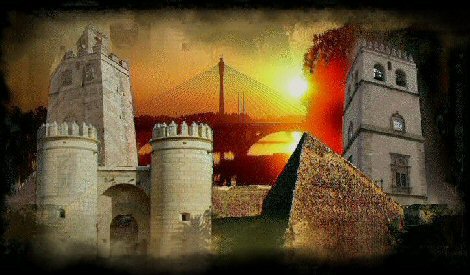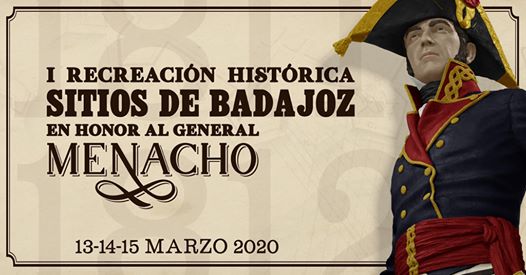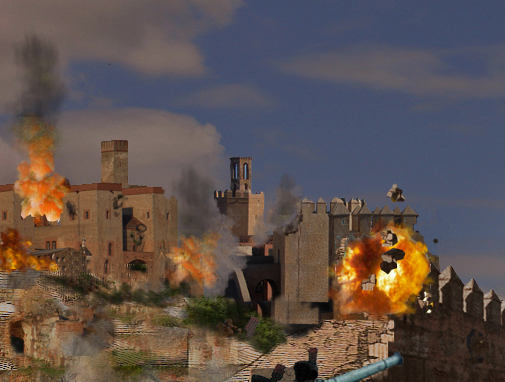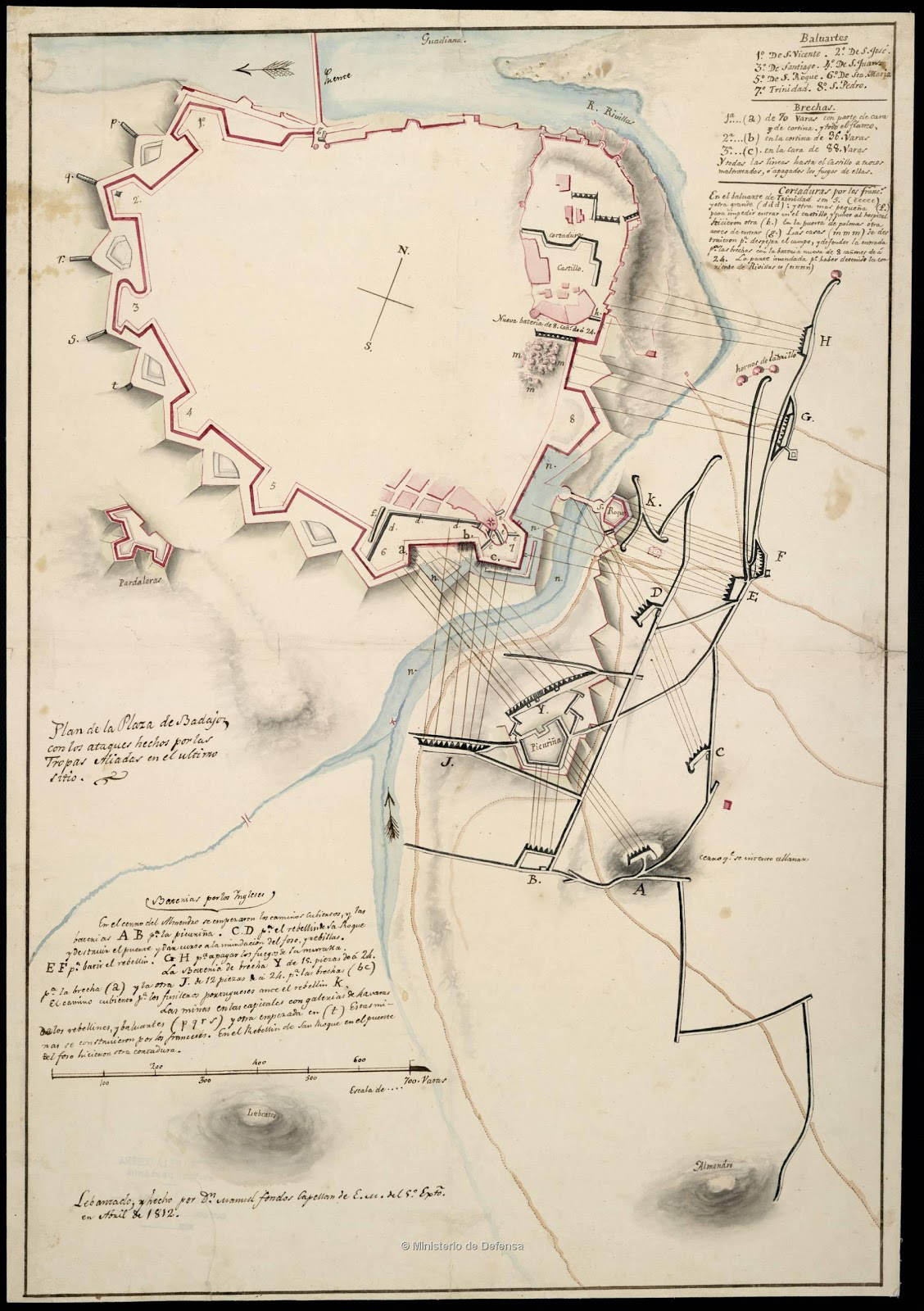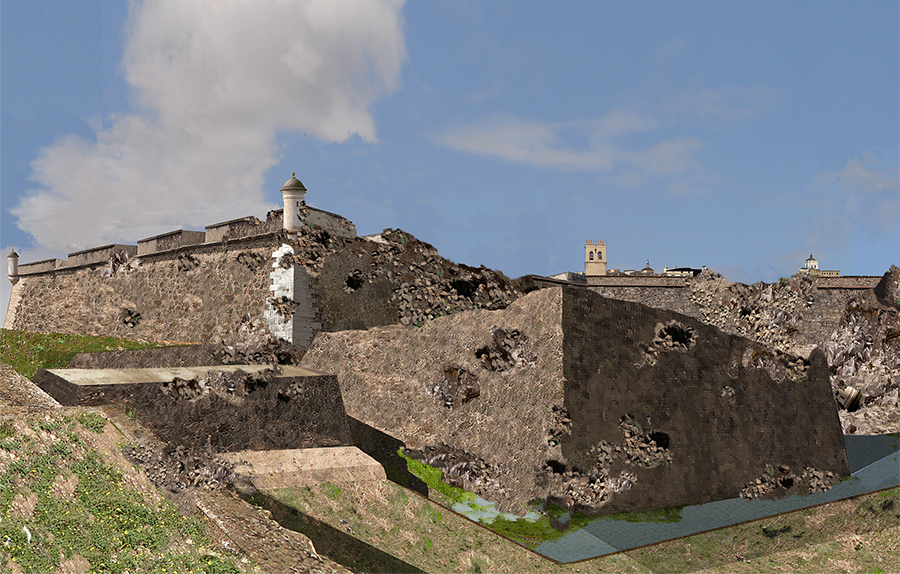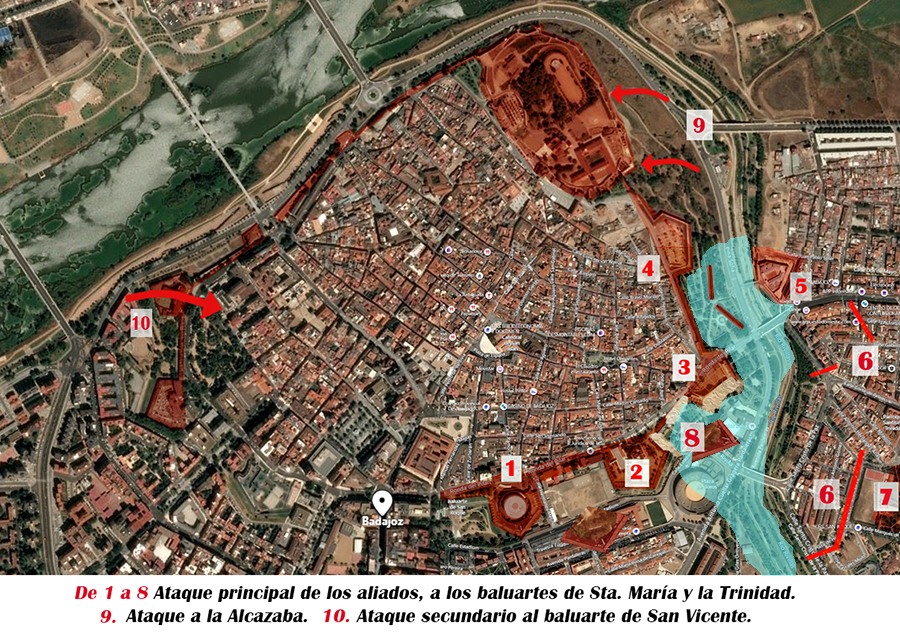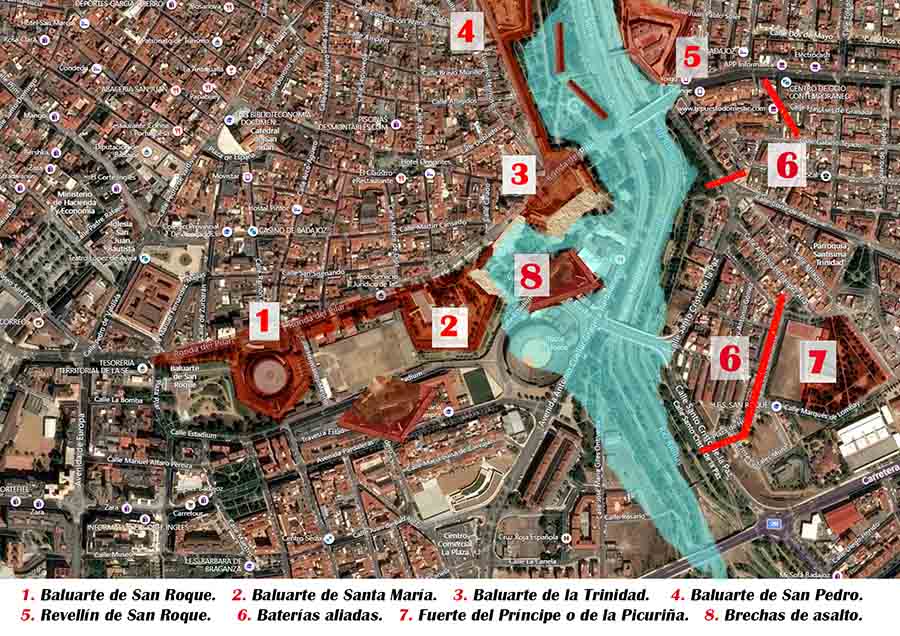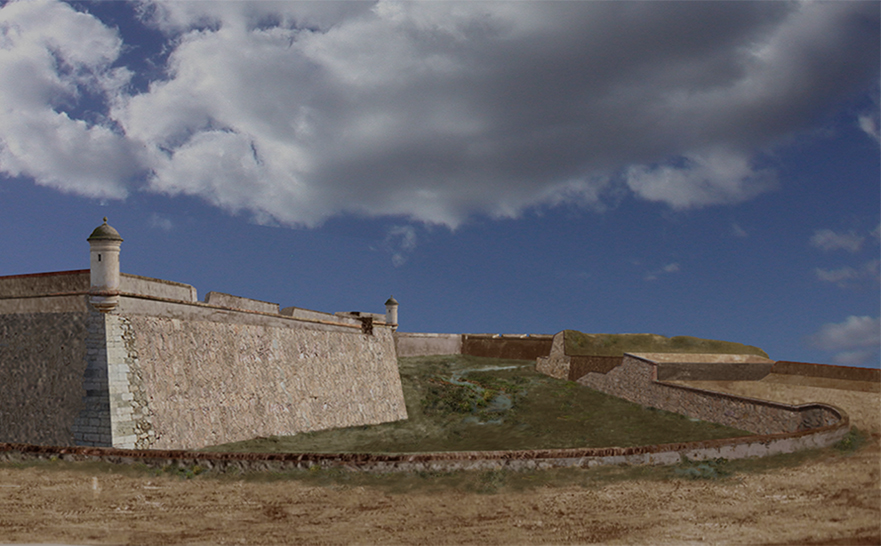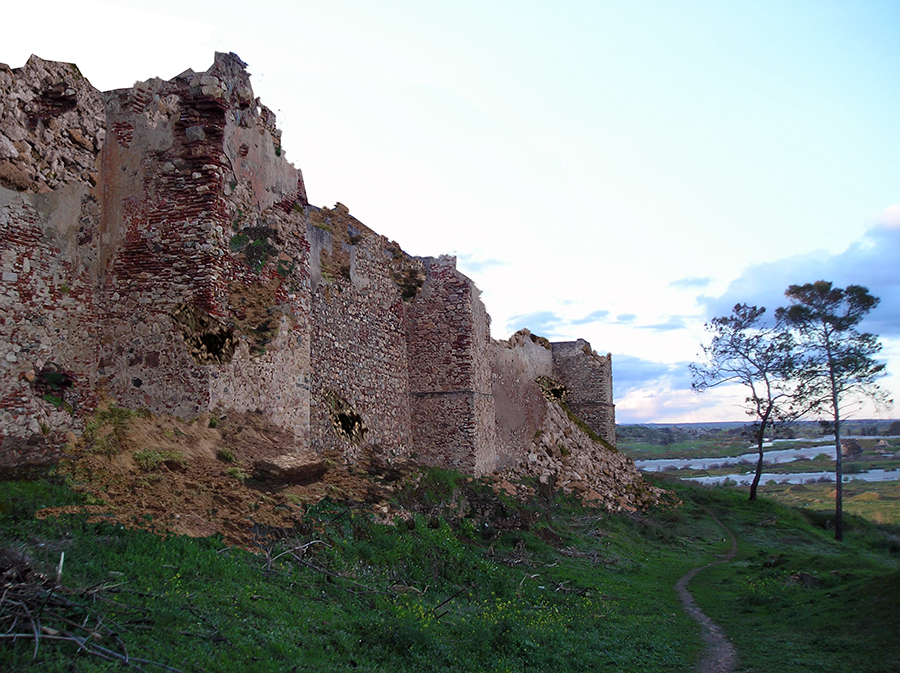Simultaneously to the north and east, Portuguese soldiers from the 5th Division and English men of the 3rd Picton carried out simultaneous attacks of distraction, one on the slopes of the Castle entrusted to General Picton and the other by General Leith that from the fort of Pardaleras marched to attack the stronghold of St. Vincent.
Under the established plan, the waves of attackers were ongoing and the confrontation was violent. While the attackers went down to the pits and approached the gaps, they exploded the mines and traps mounted by the French, piling up hundreds of dead and wounded, on whose bodies they tried to climb the successive waves they were trying to reach the top of the gaps.
The reaction of the besieged was energetic, coming to a fierce defense of the terrain, with terrible hand-to-hand struggles that prevented us from going over french lines.
The Duke of Wellington was about to suspend the bloody and costly attack, when he received the news that Picton through the Castle and Leith for the stronghold of St. Vincent, had managed to penetrate the square, ordering to persist in the final attack. The French, who also heard the news, saw that the city was overtaken by three different points and that it had its hours counted. Consequently, Philippon and his General Staff protected by his personal guard, decided to leave the city by the Bridge of Palmas, taking refuge in the Fort of San Cristobal. Faced with these events, the rest of the garrison ceased the struggle and laid down arms. The next day the French accept the capitulation.
After the tough battle, the Allies accounted for a total of 4,888 casualties, with 40% of Craufurd's Light Division losing. Taken over, the 3,500 French soldiers still defending the square were captured.
The city was razed, its main buildings destroyed and worse, the occupying troops looted palaces and temples, raped and knifed many of its inhabitants, who were only prisoners of the French. The Duke of Wellington, who was able to stop the of vengeance that his troops developed, allowed it as a relief from the victorious warrior. When he put order in the square, in the face of the fury of the Spanish and Portuguese officers who participated in the siege, the damage caused was already irreparable. |
